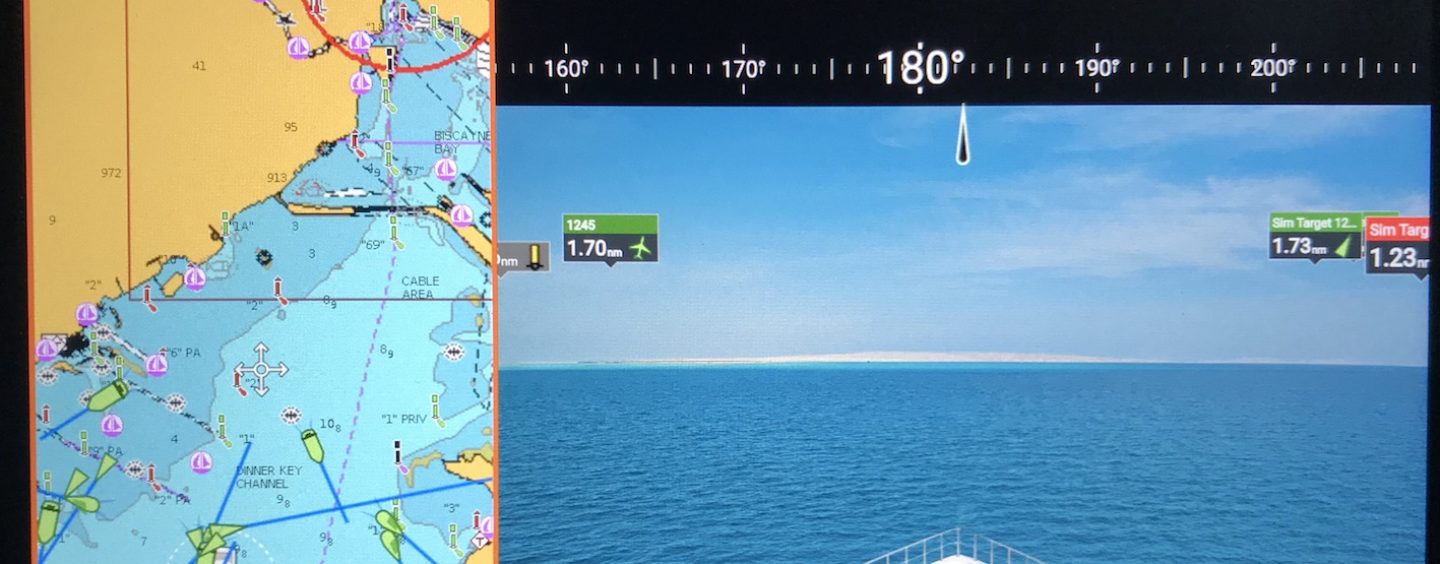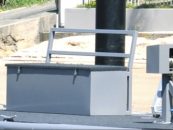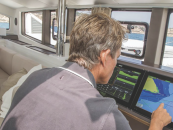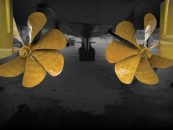Thirty odd years ago, many of the safety and integration technology that we take for granted and expect to see today on our multi-function displays (MFDs) did not exist back when electronic aids took off. Back when navigation systems were in their infancy, such a system may have consisted of 3 or 4 different brands of equipment, like a 7” Autohelm NavCentre 300 chart plotter alongside a Koden MD3000 radar and Furuno FCV-582 sounder with a Robertson autopilot at the helm. In their day, this was the latest technology and served many a boater well for several years.
Long gone are those days when we relied upon stand-alone marine navigation systems to guide us on safe passages. On a current MFD across all brands of marine navigation equipment, there are many standard features available.
Chart Plotter (using Navionics, C-Map or Garmin mapping)
Fishfinder (add transducer)
Radar (add scanner)
Autopilot (add autopilot)
Instruments (add wind, depth, speed or temp)
Automatic Identification System (add AIS)
Cameras (fixed or thermal, add camera)
Engine data (add engine interface)
Audio control (add stereo)
Digital switching (add switch modules)
VHF radio
Wi-Fi (to repeat on to a tablet)
There are also many special features unique to some of the brands. For example:
Forward-looking sonar (Garmin and Simrad)
3D underwater imaging (Furuno, Garmin, Raymarine and Simrad)
Doppler radar (Garmin, Raymarine and Simrad)
IP Cameras (Furuno, Garmin and Raymarine)
Apps (Raymarine) (Netflix, Spotify, Theyr, Lumishore, Mazu & Seakeeper)
Drone control (Raymarine)
ActiveCaptain (Garmin)
Bluetooth and Miracast (Raymarine)
MFDs come standard with a built in GPS and chart slot for mapping in their most basic form. There are many size options to choose from that will fit almost any dash configuration including:
7” (Garmin, Raymarine and Simrad)
8” (Garmin)
9” (Furuno, Garmin, Raymarine and Simrad)
10” (Garmin)
12” (Furuno, Garmin, Raymarine and Simrad)
14” (Furuno)
15” (Furuno)
16” (Garmin, Raymarine and Simrad)
17” (Garmin)
19” (Raymarine)
22” (Garmin and Raymarine)
24” (Garmin and Raymarine)
With MFDs, a great benefit is that all screen sizes within the same manufacture range run the same operating software. So any size displays can be mixed and matched to fit the space available.
FISHFINDER
All MFDs available today have a built-in fishfinder with output power between 300w and 1000w. This will suit most cruising and small fishing vessels, with depths up to 600m depending on transducer option selected. Transducers are available in various mounting options including transom mount, through hull, in-hull, and pocket mount.
If greater depth is required, an additional black box sounder module can be added for 2000w or 3000w power options giving up to 1000m plus of depth reading.
RADAR
Like fishfinders, radar is available in many variants. In leisure craft, the most common radar scanner is a dome scanner, which houses the rotating array. Larger leisure and fishing vessels normally have an open array radar. Power varies greatly ranging from very low transmission power through to the large 25kw open scanners. A radar scanner is selected depending on range and target requirements, like collision avoidance or bird-watch mode.
AUTOPILOTS
Autopilots, like all the other add-on navigation aids, can now be controlled and configured directly from a multi-function display. Until a few years ago, an autopilot was purely a stand-alone steering device with a waypoint interface from a chart plotter that enabled cross-track error correction to a waypoint. Today, not only is the cross-track error information fed from a chart plotter to the autopilot, but the heading, rudder angle, etc, are fed from the autopilot back to the MFD.
INSTRUMENTS
The most common instrument found on any vessel is the wind instrument, which also interfaces with an MFD to give a graphical wind page in either full, ., or . page. Instruments are also available in depth, speed, temperature, and graphical displays. The information can be displayed as an overlay on any main page or as its own page.
AIS (AUTOMATIC IDENTIFICATION SYSTEM)
Pleasure boats use Class-B AIS, in either receive-only or transmit-and-receive (transceiver). An AIS transceiver requires the registered owner to have an MSSI (Maritime Mobile Identity Number) issued by AMSA (Australian Maritime Safety Authority). When programmed with the owner’s vessel information, the AIS will transmit these details on the VHF frequency and other AIS-equipped vessels can view this information. AIS targets will be displayed on the MFD in either chart or radar pages.
CAMERAS
There are many uses for cameras on boats, ranging from keeping an eye on the engine room, and watching the guests in the cockpit, through to nighttime passage making. Most MFDs have an analogue camera input. However, the newer displays like the Raymarine Axiom have moved over to IP (internet protocol) cameras. An analogue camera can only be viewed on a connected display, but an IP camera can be viewed across the entire network. Thermal imaging cameras like the FLIR M232 can be fully controlled from the MFD display. This control includes pan, tilt, zoom and colour pallet changes.
DIGITAL SWITCHING
Many boats built today utilise digital switching, which does away with traditional circuit breaker switches. There are many companies, such as BEP marine, Empirebus, Octoplex, Maretron, that offer digital switching. When an MFD is integrated into the system, almost every item on the boat can be turned on or off, and monitored from the helm via an MFD.
AUDIO CONTROL
Fusion were the first marine audio company to work with the major MFD manufacturers and bring entertainment controls at the helm without the need for a separate remote. The audio page on an MFD allows for control of volume, channel change, zone, etc, which is very handy when at the controls.
VHF RADIO
VHF radio interface with an MFD to receive GPS positioning information. This is used on a VHF when utilising DSC (digital selective calling).
WI-FI
The major MFDs have built-in Wi-Fi that allow a user to connect the MFD with a tablet. Simply download the correct manufacturer app from the Apple or Android store, connect to the MFD on Wi-Fi, and you have a mobile navigation station. This can be viewed in the cockpit when fishing or in bed when at anchor. The MFD can be controlled by the tablet to change pages viewed.
ENGINE DATA
Revs, temperature, oil pressure, volts, etc, have traditionally been displayed on the likes of VDO gauges, or in later years, engine manufacturer LCD displays. With modern electronic engines, those monitored engine parameters can be viewed straight on the MFD. One of the advantages here is ascetics. By removing the traditional engine gauges, a very modern glass helm look can be achieved. Even if an older vessel is being given a makeover and the engines are older analogue ones, the required parameters can be viewed on an MFD via the likes of an Actisense EMU-1 or Maretron N2k- 100 analogue to digital converter.
www.amwholesale.com.au






























